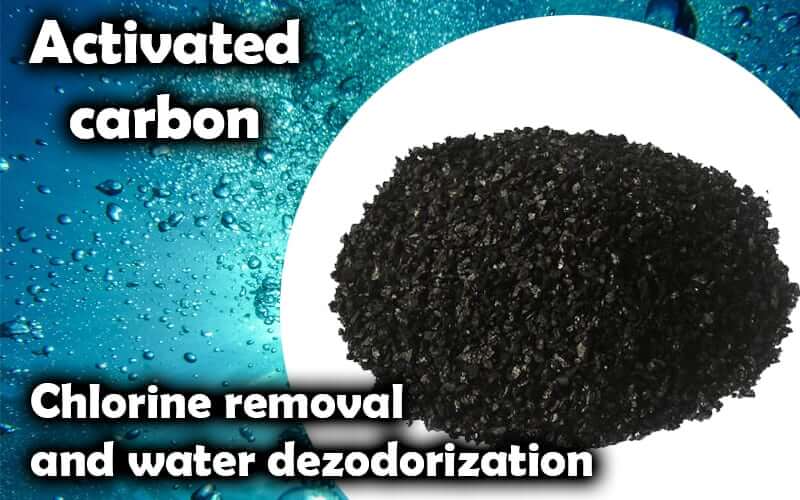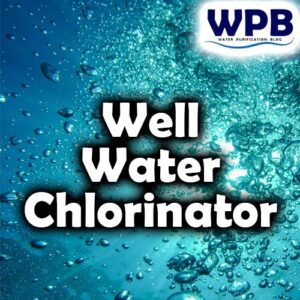Intro – What is activated carbon?
- Domestic Water Purification (78)
- Emergency Water Purification (12)
- Industrial Water Purification (37)
- Outdoor Water Purification (8)
- Water pollution problems (5)
- Water Purification Processes (5)
- Water Quality for Plants (1)
Activated carbon has become an essential component in industry, including medical, cosmetic and agricultural uses.
It is also a very important component in water filtration systems.
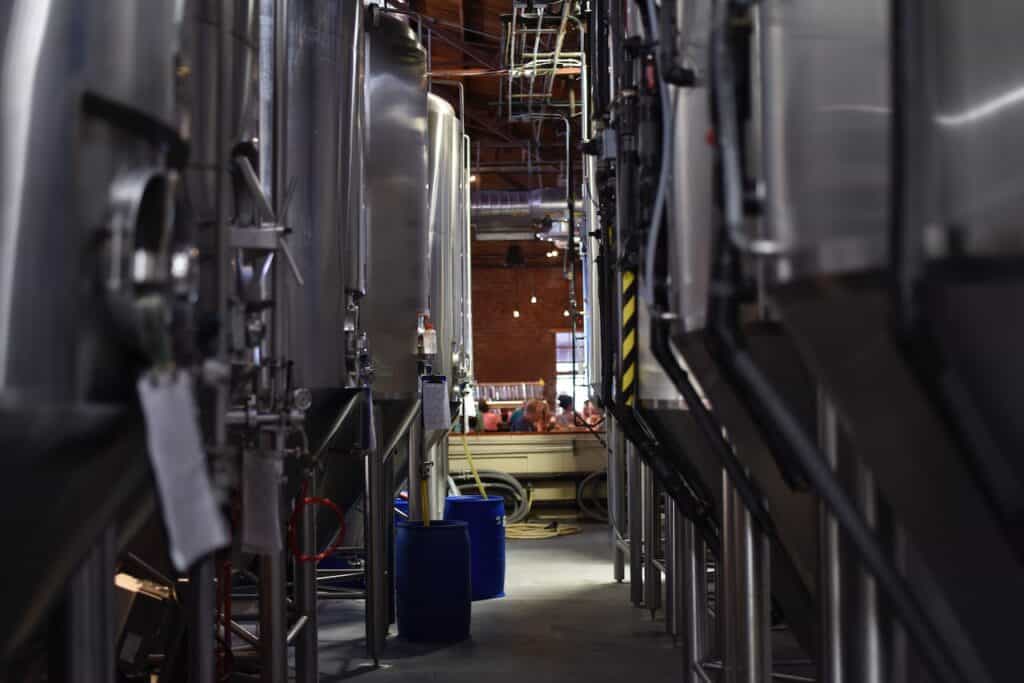
But what makes activated carbon so widely effective? Why is the same active ingredient useful in water filtration, air purification, and even teeth whitening? Let’s explore together the unique characteristics of activated carbon and why it is the best choice for water filtration.
- Intro – What is activated carbon?
- Activated Carbon History
- When did charcoal begin to be used for medical purposes?
- When was charcoal first used in water treatment?
- How was activated carbon discovered?
- Activated carbon today
- What exactly is activated charcoal?
- How is charcoal activated?
- Activated carbon pores
- Types of activated carbon
- Forms of activated carbon
- Activated carbon applications
- Water filtration with activated carbon
- What does it remove from the water?
- How do activated carbon filters work?
- What are the different types of Activated Carbon Filters?
- GAC filters (Granulated activated carbon)
- Carbon block
- Exactly what contaminants are eliminated by activated carbon filters?
- Conclusion
- Whole house activated carbon filters
- Some of our recent posts
Activated Carbon History
The actual “discovery” of charcoal was probably long before the first recorded use of the substance around 3750 BC. Because charcoal burns at a higher temperature than wood, it was often used in ancient Egypt to melt and combine metals. The Egyptians eventually discovered that charcoal had antibacterial properties when they realized that charred wooden poles did not rot when they were placed in the Nile to build docks. This discovery led to the continued use of charcoal in Egyptian medicine, embalming and burials.
When did charcoal begin to be used for medical purposes?
Around 1500 BC, there are the first written records of the medicinal use of charcoal.
The Egyptians primarily used charcoal to treat the smell that emanated from wounds. The Egyptians also started using it for stomach problems (for which it is still used today).
Several early, revolutionary doctors of this time, such as Hippocrates, used coal to treat various diseases such as epilepsy, iron deficiency, vertigo, and even some bacterial diseases.
Hundreds of years after the time of Hippocrates, the physician Pliny wrote about the fascinating way charcoal acquires medicinal properties after it has been burned.

When was charcoal first used in water treatment?
The trend of using charcoal for detox seems to have reached the Asian continents around 400 BC, where Hindus and other peoples are believed to have discovered the medicinal properties of charcoal and started using it to purify their drinking water.
These records appear in several cultures, mostly people who often traveled by ship (Indians, Chinese, Phoenicians…)
Sailors would clean the inside of casks with coal to purify and preserve water for long sea voyages. In addition, charcoal tar paste was often used to seal leaks and holes in ships.
How was activated carbon discovered?
In the early 1800s, the process of activating charcoal by exposing it to extremely high temperatures was discovered. This process led to the widely accepted use of activated charcoal as a poison remedy, and scientists in the early 19th century proved it by ingesting arsenic and activated charcoal.
Physicist Heinrich Kaiser coined an important expression in 1881. Kaiser used the word “adsorption” to describe the process of atoms or molecules from gaseous, liquid, or dissolved solids attaching to a surface and forming a film on the substance.
Kaiser began using the term to describe how activated carbon can “adsorb” gases. While the process was discovered years earlier (in an experiment with coconut charcoal to be exact!), Kaiser is credited with the word ADSORPTION.
Adsorption is the process of binding (joining) molecules, while absorption is the process of consuming something.
So activated carbon actually binds the toxin molecules to itself and does not consume them. The great adsorption power makes it very good for detoxifying the body, because it binds toxins to itself much faster than the human body does.
But if it is consumed often, it can lead to a deficit in essential minerals and vitamins that we get from food, because although it binds toxins, it also adsorbs useful things. So it is recommended to drink it in rare situations, mainly in case of food poisoning.
You must never drink it with medicines when you are taking therapy because it can completely cancel the effect of the medicine.
Activated carbon today
Today, the use of activated carbon continues to grow. It can be found in almost every hospital, clinic or doctor’s office in the world, where it is used almost every day.
The material is used in a variety of industries, including cosmetics, corn and cane sugar refining, gas adsorption, dry cleaning, pharmaceuticals, grease and oil removal, alcoholic beverage production, and more.
The largest market for activated carbon is the purification of municipal water supplies.
Activated carbon water filters are used in water treatment to remove organic compounds produced by cancerous cells during water disinfection (read water chlorination).
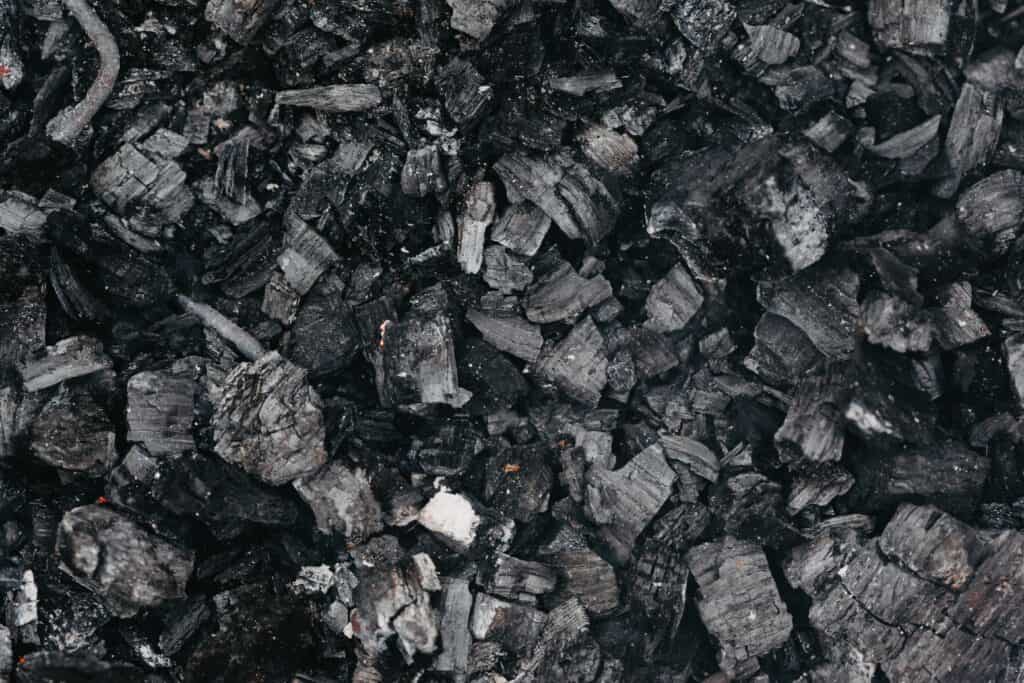
What exactly is activated charcoal?
Activated carbon is the result of burning substances such as coconut, wood, bark, bamboo and others. These substances are heated to a high temperature, which then leads to their activation due to the elimination of oxygen, which changes its chemical structure.
The result is a material that has an enormous power of adsorbing toxins and harmful substances.
How is charcoal activated?
There are two ways to obtain activated carbon:
Physical activation: In this method, coal is activated by exposure to extremely high temperatures in the range of 600 to 900 degrees Celsius. A gas, such as argon or nitrogen, is introduced into this hot and inert state. The carbonized product is then re-exposed to an oxidized environment at a high temperature to obtain activated carbon.
Chemical activation: Activated by introducing an acid, base or salt into the carbon source before it is heated. The use of this method enables the activation of coal at a lower temperature compared to the physical activation method.
Activated charcoal is actually processed to have an incredibly large surface area for the toxin molecules to bind to.
It has been treated, physically and chemically, to open the millions of tiny pores between the carbon atoms.
Small pores of small volume provide a surface for adsorption or chemical reactions.
Activated carbon pores
One gram of activated carbon has a surface area of over 3,000 square meters – and one tablespoon has roughly the surface area of a football field.
The huge surface area makes activated carbon extremely useful for a wide range of applications, but activated carbon can undergo further chemical treatment to increase its adsorption properties.
Types of activated carbon
What can we “activate” to get Activated Carbon?:
Wood or Peat: Peat is a collection of partially decayed vegetables and organic matter that can be used to make activated carbon. The carbon content found in wood and peat is macroporous in nature, making it ideal for the elimination of large molecules and compounds.
Coconut shells: The charcoal found in coconut shells is microporous in nature. Therefore, the activated carbon resulting from it has the highest adsorption rate, which makes it an ideal choice for removing toxins that have a lower molecular weight.
Coal: The pore structure of activated carbon derived from coal depends on the type and quality of the coal used. However, it usually falls in the range of porosity between wood and coir.
Raw organic materials: Any organic material can be used to create activated carbon. The porosity of the resulting coal would vary depending on the type of material used to produce it.
Bamboo: Along with coconut, one of the best sources of activated carbon.
water filters, for example, use activated carbon produced from coconut bark, which is also the highest quality, 100% natural without added chemicals, but its disadvantage is the high cost of production.
Coconut shell-based activated carbon is the most well-known treatment for chemicals, harmful organic matter, pesticides, herbicides and chlorine and its by-products. It also SIGNIFICANTLY improves taste, smell and color.
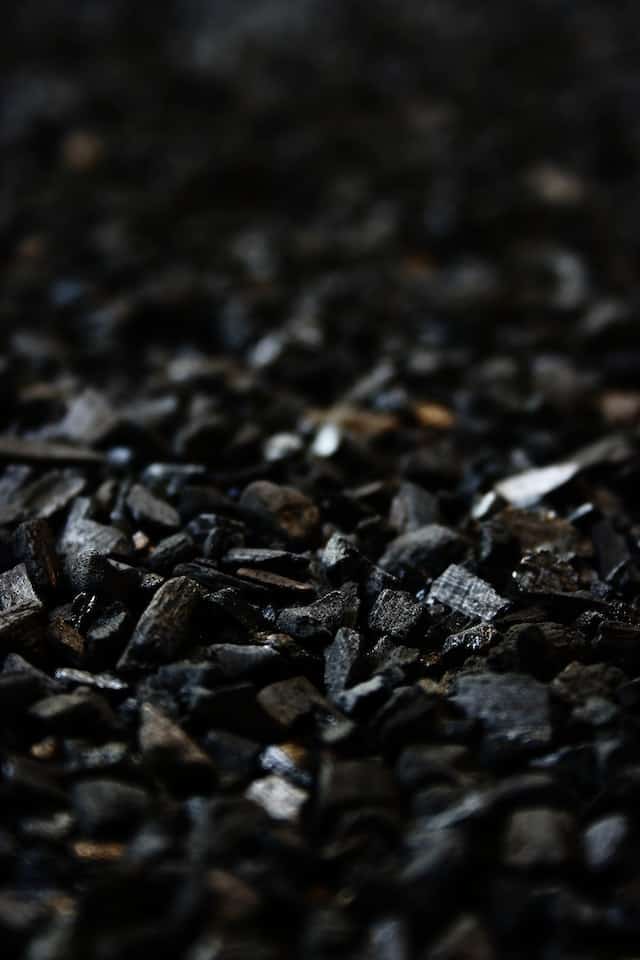
Forms of activated carbon
What are the most famous forms in which activated carbon appears?
Activated carbon powder: Consists of powdered carbon and has a grain size of less than 0.18 mm. This form of activated carbon is commonly used in gas and liquid treatments.
Granular Activated Carbon: The granular nature suggests that the activated carbon particles are irregular in shape and size. Their size ranges from 0.2 to 5 mm and can be used for both liquid and gas.
Extruded activated carbon: Activated carbon is extruded and cylindrical in size, ranging from 0.8 to 5 mm in diameter. It is mostly effective in gas applications due to its low dust content and pressure.
Sintered Activated Carbon: Sintered activated carbon is generally formed in the form of cylindrical blocks. This is done by pressing activated carbon powder under high temperatures to obtain a firm and rigid structure suitable for fine filtration of liquids.
The best possible form of activated carbon in drinking water filtration is when it is used in block form.
When activated carbon is sintered, it is pressed under high temperatures, it gets a much higher density and surface than other forms of activated carbon.
This enables it to have a much more efficient filtration and a much larger capacity of filtered water.
Even up to 10x more capacity, than bulk granulated activated carbon.
Activated carbon applications
Activated carbon is used in a wide variety of applications from gold refining to wastewater treatment.
Some of the common uses include air purification, hydrogen and methane storage, metal extraction, teeth whitening and other cosmetic products, as well as air filters in respirators and gas masks.
To fully explain each application of activated charcoal would take too much time, so we’ve grouped its multiple uses into a few broad categories:
Medical Applications – Activated charcoal is widely used in the medical community to treat overdoses and poisonings. In addition, capsules or tablets with activated charcoal can be obtained worldwide to alleviate problems such as indigestion and diarrhea.
Industrial Applications – Activated carbon is used in a wide range of industrial and manufacturing contexts. One common industrial application is in metal finishing. It is the primary means of purifying and removing impurities from metals such as nickel.
Analytical Chemistry Applications – Because of its high adsorption capacity, activated carbon is often used to purify solutions of organic molecules and chemicals. In combination with diatomaceous earth, activated carbon acts as a stationary phase in low-pressure hydrocarbon separation.
Agricultural Applications: – It has grown in popularity with organic farmers and winegrowers. In animal production, it serves as an addition to animal feed, natural pesticides, auxiliary material for processing and disinfection. For winemaking, it is a processing agent that absorbs odors and undesirable color pigments.
Applications in the environment: – Due to its large surface area and adsorption potential, activated carbon serves a wide range of applications in the environment. It is useful in remediation of underground water and cleaning of spilled water.
Cosmetic Applications: – Activated charcoal is now a popular ingredient in shampoos, toothpastes and face masks. The same properties that make it an excellent filter also make it exceptional in a cosmetic context. It traps toxins and contaminants so they can be washed away.

Purification of distilled liquor: – Activated carbon filters are sometimes used in the production of whiskey and vodka to remove organic impurities from the beverage. Activated carbon filters out impurities that affect taste, color and smell without reducing the alcohol content of beverages.
Water Purification: – Water purification is a major use of activated carbon. Activated carbon water filters can remove impurities from large scale plumbing systems as well as smaller scale residential applications.
Air and Gas Purification: – Activated carbon filters odors, pollutants, and volatile organic compounds (VOCs) from the air by trapping gas molecules and effectively removing them from circulation. Also, activated carbon can be used to detect and adsorb radon in the air. In gas purification, activated carbon air filters remove odors, hydrocarbons, and vapors from the air.
Mercury Removal: – Mercury is a common and dangerous emission from coal-fired power plants or industries. When infused with halogen or sulfur, activated charcoal traps mercury gas and removes it from the air.
Gas Storage: – The porous surface of activated carbon acts as a sponge for many types of gases. Research suggests that it can efficiently store gases in low-mass, low-volume, low-pressure environments.
Space Technology: – Activated carbon is an essential component in spacesuit life support systems. The activated carbon filter removes trace contaminants from the oxygen flow to the astronauts, including body odors.

This is just proof of the versatility of activated carbon. Because it is such a useful material, researchers are constantly discovering new applications for activated carbon.
Water filtration with activated carbon
One of the biggest applications of activated carbon is water filtration.
What does it remove from the water?
Disinfectants from water, such as chlorine and chloramines, are removed by catalytic reduction, and organic compounds are removed by adsorption. Acidity and water temperature can be important because higher acidity and lower water temperatures improve the performance of activated carbon.
Enrichment of activated carbon with silver solution is used to activate the antibacterial property of activated carbon.
That’s one of the reasons why water filters often have an active carbon filter with silver.
It serves to additionally “polish” the water at the end and remove possible residues, which the first filter may not have succeeded.
How do activated carbon filters work?
Activated carbon is so effective thanks to its incredible surface area.
Physical adsorption is the main way activated carbon filters a given substance. As the liquid comes into contact with the activated carbon, intermolecular forces pull the molecules into the millions of pores and pockets on the surface of the activated carbon.
In addition to physical adsorption, activated carbon also facilitates chemical reactions. A common example involves chlorine molecules.
When chlorine comes into contact with activated carbon, both molecules react and form chloride ions, effectively removing chlorine from the water.
Carbon molecules with large openings trap large and heavy molecules such as those found in organic chemicals. Small, fine pores collect smaller and lighter impurities.
Manufacturers of activated carbon often label their products with their adsorption potential.
What are the different types of Activated Carbon Filters?
Currently, two types of carbon are most commonly used for water filtration: powdered activated carbon (PAC) and granular activated carbon (GAC).
PAC has a smaller particle size than GAC and is usually more effective at removing a wide range of impurities from water.
In most filters, activated carbon is combined with a secondary element or media such as silver. Added components give the filter additional bacteriostatic properties.
GAC filters (Granulated activated carbon)
GAC filters are usually cylindrical containers that hold the GAC particles. Water is added to the tank and as the water flows through the system, the loose carbon particles filter out the impurities.
However, channeling is a common problem with GAC filters. As the water enters the chamber, it automatically flows through the vessel along the path (channel) of least resistance. This means that the activated carbon particles bypassed by the water are underutilized, reducing the overall efficiency of the filtration system.
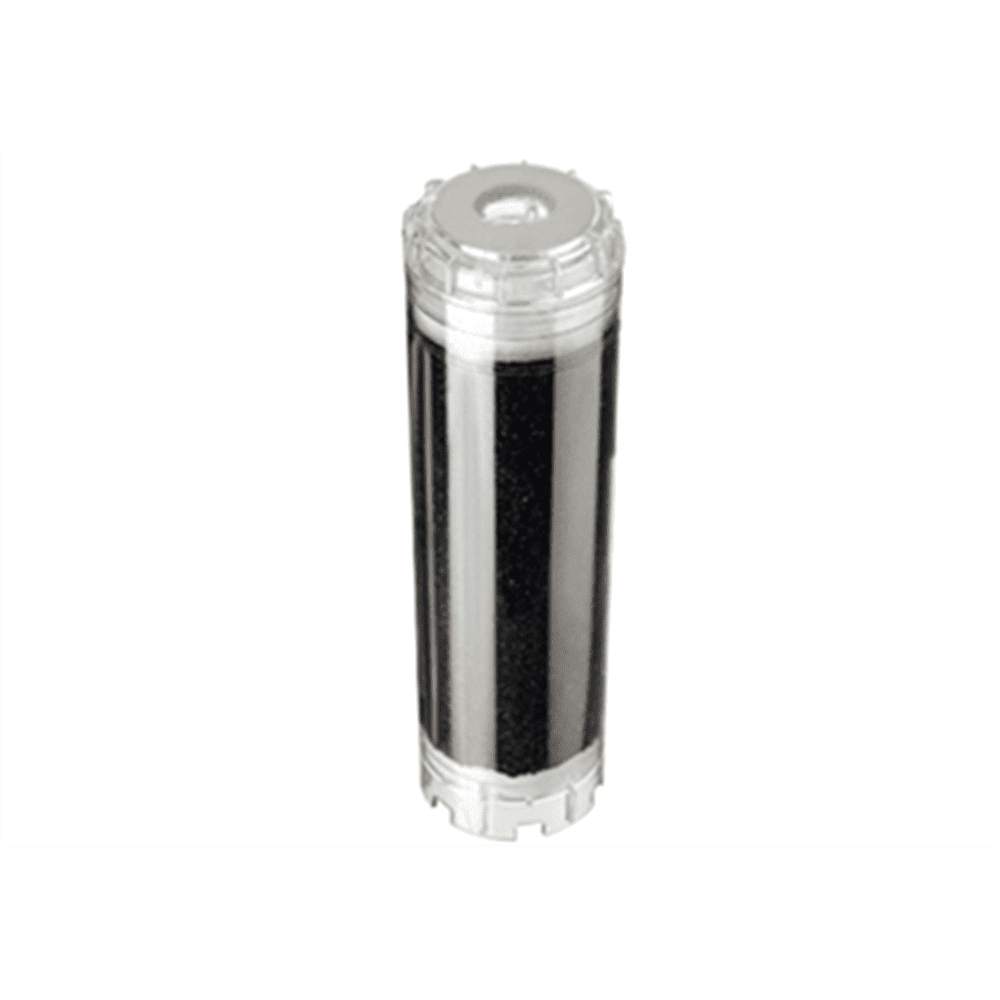
Carbon block
Solid carbon blocks are densely packed (sintered) blocks of PAC and GAC particles of various sizes. The water flows through the pores of the block, and as it travels through the filter, the fine particles remove a wide range of impurities.
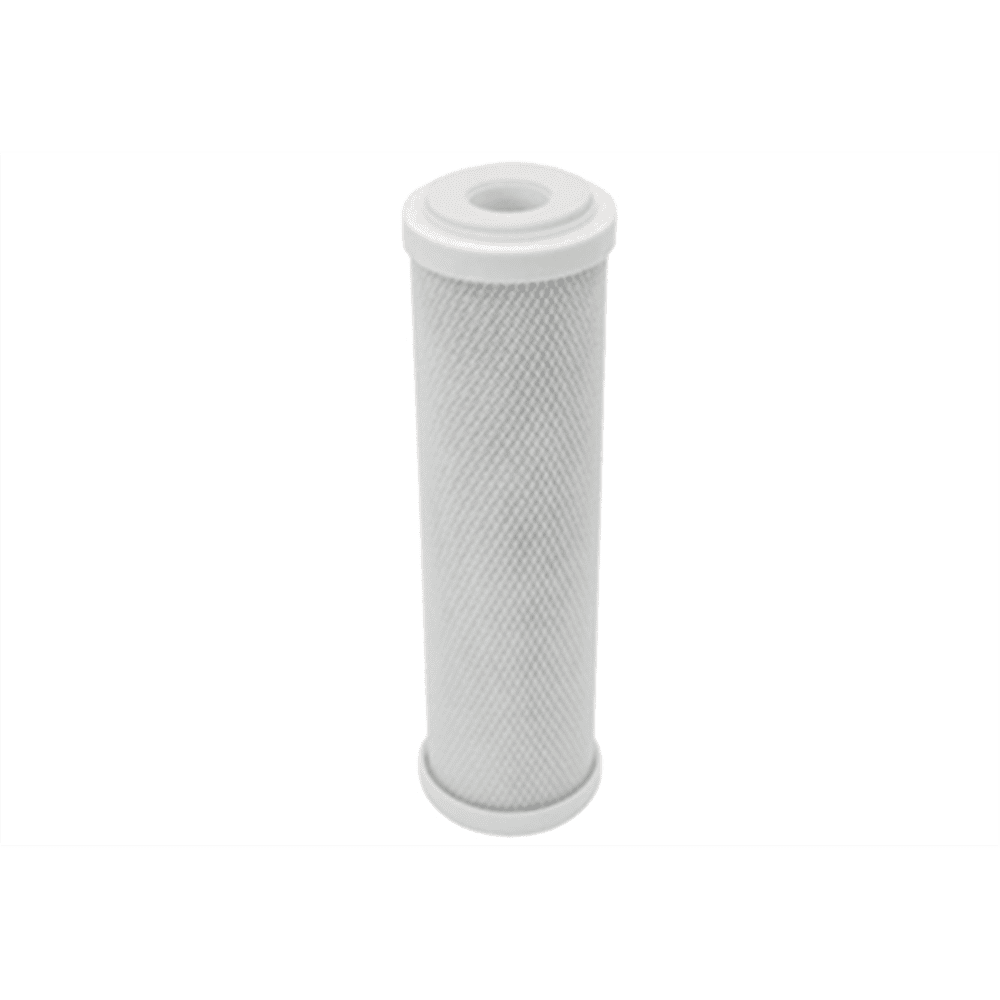
The primary advantage of block filters over GAC filters is the much higher efficiency and filtration surface area.
With filters cartridges consisting of a block of activated carbon, the carbon particles are immobile and each particle is used for maximum efficiency.
A wide range of impurities are removed from the water – carbon adsorbs small contaminants, while larger impurities are too large to even pass through the pores of the block and are left behind.
Filters with carbon block cartridges have one drawback – it takes more time for water to pass through solid block filters than through filters with granular activated carbon. But on the other hand, it is also an advantage, because the longer the contact time between water and activated carbon, the better the filtration.
Which means it’s not practical for cases where a large amount of water needs to be filtered quickly, such as in municipal water systems.
However, for many households, an activated carbon block filter provides more than enough filtered drinking water every day.
Exactly what contaminants are eliminated by activated carbon filters?
In general, these filters remove at least 81 different chemicals and are effective at reducing an additional 52.
According to the EPA (Environmental Protection Agency), activated carbon is the only filter material that removes all 12 identified herbicides and 14 pesticides, along with all 32 identified organic pollutants.
Activated charcoal also removes chemicals, such as chlorine trihalomethanes and other…
Most public water systems contain chlorine as a disinfectant. However, chlorine can cause unpleasant tastes and odors in tap water, as well as the formation of potentially carcinogenic byproducts. Activated carbon filters out chlorine by-products and VOCs, yielding clean water.
But he does not remove everything from the water. Certain minerals, salts and metals can pass through the filter.
Unlike GAC filters. Carbon block filters can remove many more contaminants, including metals like lead. Carbon block filters also remove microbiological contaminants from drinking water, including waterborne pathogens. The best carbon block filters reduce pollutants like arsenic, asbestos, mercury and radon.
Conclusion
Activated carbon is a powerful and potent agent for detoxification and cleansing, and its vast application has made us use it for a wide variety of purposes. From water filters, through industry to cosmetics, it is widely used.
It is up to us to consider how to use it as much as possible because it is completely natural and environmentally safe. Also to use it as much as possible as an alternative to some products that pollute the environment.
Whole house activated carbon filters
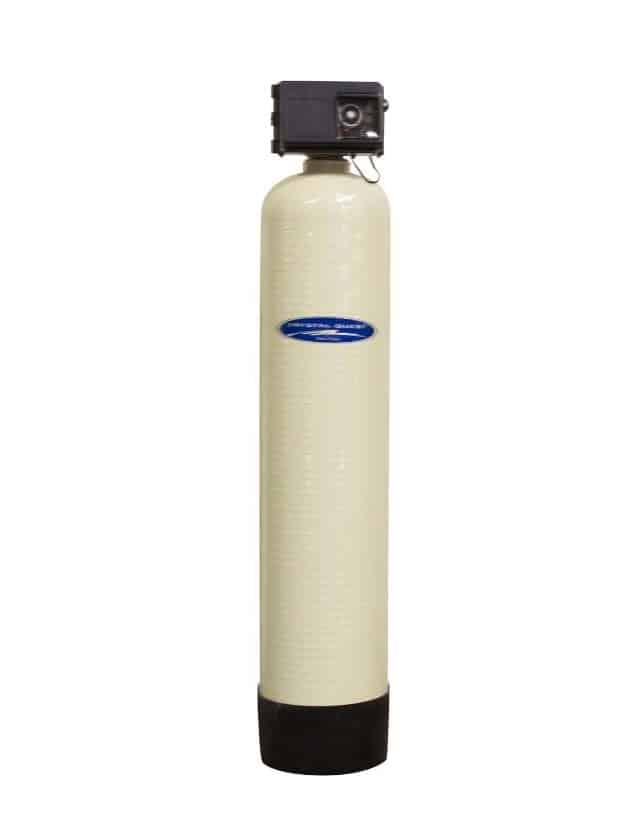
Granular Activated Carbon Water Filtration System
Crystal Quest® Commercial Granular Activated Carbon (GAC) Filters are designed and manufactured for outstanding service. Our filters are the perfect solution to adsorb unfriendly and potentially harmful substances from your water source. GAC filters have applications in a variety of settings including government usages, school campuses, service industries, agriculture, and much more.
In fact, GAC has been known as the miracle media filter of choice by researchers for centuries due to its unique ability to improve taste, odor, and the color of water by removing undesirable contaminants. The EPA has deemed GAC filters to be the recommended method for removing a host of potentially hazardous and possibly carcinogenic chemicals in drinking water.

Who am I?
I am working as a water treatment technical manager and I have more than 25 years of practical experience in water purification.
Water purification expert
After many years of experience in water purification, I want to share some of my knowledge and get people to know the real importance of water quality.
Water purification and water treatment are very complex themes, so it is important to explain them in an easy-to-read way.
On this blog, you will find many understandable, easy-to-read information about water purification.
I hope you enjoy it, find some useful information, and thank You for reading.
More info on my work and my expertise on water purification can be found on my LinkedIn profile.

